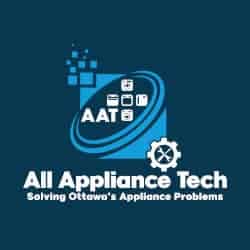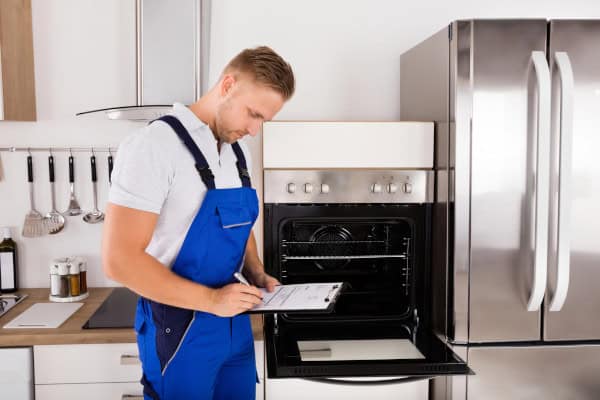Maintaining your appliances isn’t just about ensuring they work day-to-day—it’s about protecting your investment and saving money over the long term. Regular maintenance helps prevent costly repairs by identifying small issues early before they evolve into bigger, more expensive problems. Whether it’s clearing out dryer vents to prevent overheating or cleaning refrigerator coils, simple tasks like these can extend the lifespan of your appliances, reduce energy consumption, and help avoid unexpected breakdowns that lead to emergency repair bills.
By keeping your appliances in good working order, you avoid the hefty price tags of premature replacements and enjoy lower utility bills. Skipping routine maintenance can lead to reduced performance, shorter lifespans, and missed opportunities to save. Regular appliance care isn’t just about avoiding repairs—it’s about keeping your home running efficiently and preserving the value of your appliances. Not only does this proactive approach save you from hefty repair bills, but it also plays a critical role in preventing those unexpected breakdowns that catch homeowners off guard.
Preventing Costly Repairs
Regular maintenance is key to preventing small appliance problems from turning into expensive repairs. For example, a clogged dryer vent may seem like a minor issue, but left unattended, it can cause overheating or even pose a fire risk. Addressing the problem early, by simply cleaning the vent, can save you hundreds in repair costs while ensuring your appliance operates safely.
Neglecting regular maintenance can also lead to the failure of crucial components. For instance, refrigerator coils covered in dust force the compressor to work harder, leading to premature failure. Replacing a compressor can cost between $700 and $1,250, depending on the model, as noted by HomeGuide. However, regularly cleaning the coils can prevent these major issues, saving you both time and money.
In addition to preventing breakdowns, catching small issues early also extends the overall lifespan of your appliances. For instance, inspecting the door gaskets on your dishwasher or refrigerator can help prevent leaks and inefficient cooling, both of which would otherwise lead to higher utility bills and expensive repairs. By addressing these issues early, you avoid emergency situations that would otherwise be a financial burden. Not only are you saving on repair costs, but regular maintenance also ensures your appliances continue to work efficiently, benefiting you in multiple ways.
Key Examples:
- Dryer vent cleaning: Prevents overheating and fire hazards, saving $150–$300 in repairs.
- Refrigerator coil cleaning: Avoids compressor damage, saving up to $1,000 in replacement costs.
- Dishwasher gasket checks: Stops water leaks and inefficient cooling, reducing repair costs by $200–$600.
By proactively tackling these maintenance tasks, you reduce the chances of unexpected repairs while keeping your appliances in prime condition. But this is only part of the equation—next, we’ll look at how maintaining your appliances doesn’t just prevent costly breakdowns but also helps save energy, lowering your utility bills month after month
Extending Your Appliances Lifespan
Routine maintenance plays a critical role in extending the life of your appliances by reducing unnecessary wear and tear. Appliances that receive regular care can last significantly longer, which means you can delay costly replacements and keep your household running smoothly for years. The cost benefits are clear: the longer your appliances last, the more value you get from your initial investment, and the less often you need to spend on replacements.
On average, major appliances like refrigerators, washers, and dryers have a lifespan of around 10–15 years. However, with regular maintenance, these appliances can last even longer. For instance, refrigerators can last up to 20 years when properly maintained, with freezer-top or side-by-side models averaging about 13 years, as detailed in this appliance lifespan guide from Best Life and Bob Vila’s appliance maintenance tips.
Maintenance tasks like inspecting washing machine hoses for leaks or cleaning dryer vents can prevent small issues from becoming costly repairs. Without this attention, problems such as broken washer drums or overheating dryers could lead to premature failure and expensive replacements.
Examples of Extended Appliance Lifespan with Maintenance:
- Refrigerators: With regular coil cleaning and gasket checks, refrigerators can last up to 20 years. Without proper care, they may only last 10–13 years.
- Washers and Dryers: Regular hose checks and vent cleanings can extend their lifespan to nearly 20 years, while neglected units may fail after 8–10 years.
By investing in routine maintenance, you give your appliances a longer life, saving you the costs and hassle of replacing them prematurely.
Improving Energy Efficiency
Well-maintained appliances not only last longer but also operate more efficiently, leading to significant savings on your utility bills. Regular maintenance tasks—like cleaning filters, replacing seals, and keeping components dust-free—help your appliances use less electricity, gas, and water. Over time, these simple upkeep tasks result in lower energy consumption and reduced monthly expenses.
Certain appliances, such as dishwashers, dryers, and refrigerators, show notable improvements in energy efficiency when maintained regularly. For example, cleaning a dryer’s lint trap before each load improves airflow and reduces drying time. According to EnergyStar's dryer efficiency tips, this simple step can save up to $34 per year while ensuring efficient energy use. Similarly, regularly cleaning refrigerator condenser coils allows the compressor to work more efficiently, reducing energy consumption by 5%–10%.
These energy efficiency improvements can make a real difference. By maintaining their appliances, a family could save $20 to $40 per year on electricity for refrigerators. Keeping a dishwasher’s filters clean and running it only with full loads can reduce both water and energy usage, leading to savings of $15–$25 annually.
Routine maintenance not only prevents breakdowns but also ensures your appliances run at peak efficiency. Clean filters, properly sealed doors, and well-lubricated components keep each appliance functioning smoothly, lowering energy use and extending the time between costly utility bills.
Real-World Savings:
- Dryers: Cleaning the lint trap and vent can save around $15–$34 annually, as highlighted by EnergyStar’s tips for energy-efficient dryers.
- Refrigerators: Regular coil cleaning can reduce energy consumption by 5%–10%, offering savings of approximately $20–$40 annually, as noted in EnergyStar’s refrigerator maintenance guide.
- Dishwashers: Maintaining seals and cleaning filters can lead to water and energy savings, with an estimated savings of $15–$25 annually, according to EnergyStar’s advice on dishwashers.
By completing these simple maintenance tasks, homeowners can reduce their utility bills and make their homes more energy-efficient, further extending the life of their appliances.
Avoiding Emergency Breakdowns
One of the biggest benefits of routine maintenance is the ability to prevent sudden, unexpected breakdowns that often lead to costly emergency repairs. These breakdowns tend to occur when small issues are left unattended, gradually worsening until they cause a complete appliance failure. In most cases, these problems could have been avoided with simple, regular upkeep.
Common causes of appliance breakdowns are often related to neglect. For instance, dryer fires can be traced back to clogged vents and lint buildup, which can cause overheating. Cleaning your dryer vent regularly, which typically costs around $100, can prevent these issues. On the other hand, repairs for a malfunctioning dryer can range from $100 to $600, depending on whether it's a blown thermal fuse, a faulty start switch, or a broken drive belt. You can find more cost details in this comprehensive appliance repair cost guide.
Similarly, dishwasher leaks are often caused by worn-out door gaskets or clogged filters. Replacing a dishwasher door gasket typically costs around $75 to $300, while fixing a leaking dishwasher may cost between $150 and $500, depending on the severity of the issue. By handling these repairs early, homeowners can prevent more severe damage. For further information on repair costs, refer to the detailed guide provided by All Appliance Tech.
By investing in routine maintenance, homeowners can prevent sudden breakdowns and avoid the high costs associated with emergency repairs. As we’ve seen, the cost difference between proactive upkeep and reactive fixes is substantial, offering both peace of mind and long-term savings.
Key Examples of Preventable Breakdowns:
- Dryers: Clogged vents can lead to overheating and possible fires, costing $200–$400 in emergency repairs. Routine vent cleaning costs around $100.
- Dishwashers: Worn door seals cause leaks that can cost up to $500 to repair, while replacing seals costs about $75–$300.
Balancing DIY Maintenance with Professional Servicing
Knowing which maintenance tasks you can handle yourself and when to call in a professional is crucial for keeping your appliances in top condition without overspending. By balancing simple DIY tasks with professional servicing, you can save money while ensuring your appliances receive the care they need.
Easy, Budget-Friendly DIY Tasks:
- Cleaning Filters: Regularly clean or replace filters on appliances like dryers, dishwashers, and refrigerators to maintain efficiency.
- Checking Seals: Inspect the seals on your refrigerator and oven doors to ensure they are tight, preventing energy loss.
- Clearing Lint Traps: Clean the lint trap in your dryer after each use to improve airflow and reduce fire risk.
- Descaling Appliances: Remove mineral buildup from coffee makers and kettles to keep them functioning properly.
These tasks are straightforward and can be performed with minimal tools and time investment, helping you avoid minor issues that could escalate.
When to Call in the Professionals:
- Electrical or Gas Components: If maintenance involves electrical wiring or gas lines, it's safer and more effective to hire a certified technician.
- Complex Repairs: Issues like refrigerator compressor problems, internal dryer malfunctions, or water heater servicing require professional expertise.
- Annual Check-Ups: Scheduling routine inspections for appliances like HVAC systems can catch potential problems early.
Professional maintenance services typically cost between $100 and $200 per visit. While this is an upfront expense, it can prevent much larger repair costs down the line, making it a wise investment.
By combining regular DIY maintenance with professional servicing when needed, you ensure your appliances run efficiently and last longer, ultimately saving you money.
The Long-Term Value of Regular Appliance Maintenance
Investing time and resources into regular appliance maintenance is not just about preventing immediate problems—it's about securing long-term financial and practical benefits. Maintaining your appliances leads to lower energy bills, fewer emergency repairs, and an extended lifespan for the machines you rely on every day.
By staying proactive, you can avoid the hefty costs associated with major breakdowns and replacements. Routine tasks like cleaning filters or scheduling professional check-ups contribute to both short-term savings and long-term peace of mind.
Now is the perfect time to create a maintenance plan for your home appliances. If you're unsure where to start, consider reaching out to a professional technician who can assess your appliances and provide expert guidance on keeping them in peak condition.


